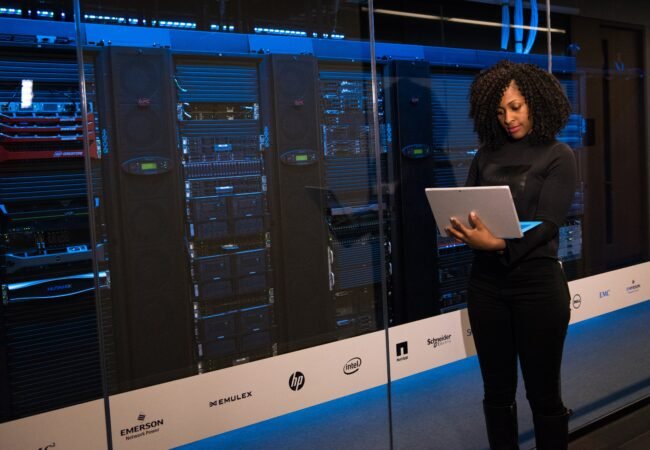
As Web3 goes beyond the hype, companies looking to grow within the space are focused on security more than ever. This article discusses how establishing a secure whitelisting process is essential for Web3 platforms because it helps maintain its integrity and protects users from malicious actors.
The decentralized web, also known as Web3, is becoming more popular due to the immutable data linked to the blockchain, touting better security and privacy features for users and companies. Despite many high-profile scams that shook user confidence over the last year, there is still interest in Web3 from companies and users as the platform goes beyond the hype.
One of the significant signs of growth with Web3 is the growing conversation about implementing increased security measures to offset risk.
Understand Potential Roadblocks
With a whitelist, companies can approve users or entities permitted access to certain organizational assets, including digital assets such as cryptocurrency wallets and accounts. As with anything, there are potential challenges that organizations may face. A better understanding of possible roadblocks will make creating and maintaining a whitelist easier in the long run.
- Human error: Establishing a whitelist involves manual processes, which can lead to errors. This could include adding or removing the wrong entities or addresses or making mistakes while building the list.
- Scalability: Safelists can be challenging to manage as the number of entities or addresses on the list grows. Cross-checking the list regularly will ensure that only approved entities can access the network or application.
- Flexibility: As the network or application evolves, the security requirements may change, making it necessary to update safety protocols. Yet, even the most rigid allowlist may not accommodate these changes, which can present a challenge when attempting to maintain the network’s security or application.
- Complexity: Implementing a whitelist can be complex, especially involving multiple parties. A common issue faced by companies juggling numerous entities is ensuring that security guidelines are functioning as intended.
Companies centring on their business model within the Web3 space need to be aware that their platform will be undermined by security threats without user trust established. The role of the whitelist is to operate as a set of guidelines for building and maintaining trust among their users.
A High-security Whitelist Can Help Companies Keep Users Safe
By the end of 2022, Web3 faced a growing chorus of users demanding that companies prioritize their security. Building a refined whitelist that will serve as a guidebook to growing a business in Web3 that values user safety and integrity is a great jumping-off point.
Companies can mitigate the challenges of establishing a whitelist and ensure it remains up-to-date and aligned with the latest security requirements and best practices.
Implement an automated process for whitelist management that allows for easy updates and management of the list. Tools like Premint manage certain discord roles, Twitter following, website subscriptions, and whitelist automation. It has done Allowlist automation for popular celebrities like Shaq and Tim Ferriss and brands like Gucci and Lacoste. Here are some steps that businesses can take to ensure they are on the right track:
- Smart contracts, when developing whitelists, are a great tool for executing a tamper-proof, transparent list as they are customizable and self-executing.
- Implement a multi-signature wallet. Multiple signatures are required to authorize a transaction, which reduces the risk of one person making a mistake that could compromise the security of the entire network or application.
- Regularly review and update the whitelist. This can help ensure the whitelist meets the latest security requirements and best practices.
- Keep the whitelist updated. Only approved entities should have access to the network or application.
- Provide an additional layer of security with encryption which will make it harder for unauthorized parties to access the list.
- Use secure hardware, like a cold storage wallet, that can provide an additional layer of security and store private keys in a secure environment.
- Keep track of the changes to help audit and troubleshoot the whitelist.
In addition to updating your whitelist regularly and getting familiar with the ins and outs of basic security measures, like smart contracts, companies need to be sure they are up to date on the latest security risks and solutions. It’s often worth implementing a training program focused on whitelist management; focusing on reducing human error through knowledge of best practices is one of the simplest ways to provide safety.
Ways Community Members Can Contribute
Leveraging the community is a great method to enhance whitelist processes, as many projects rely on DAOs or the majority of rules are set by the community. Additionally, companies that regularly engage with their users offer tangible opportunities to build trust, showing users that they value their opinion. Authentically engage with community members by allowing them to suggest best practices that can be added to the safelist.
Such practices include setting up multi-signature wallets, using encryption, and checking in with community members for reviews. But ensure the list is regularly updated and only approved entities can access the network or application.
By taking a multi-pronged approach to building a high-security whitelist, companies can show their community that they prioritise their needs while also implementing forward-thinking methods that will allow them to grow alongside Web3’s evolution.






